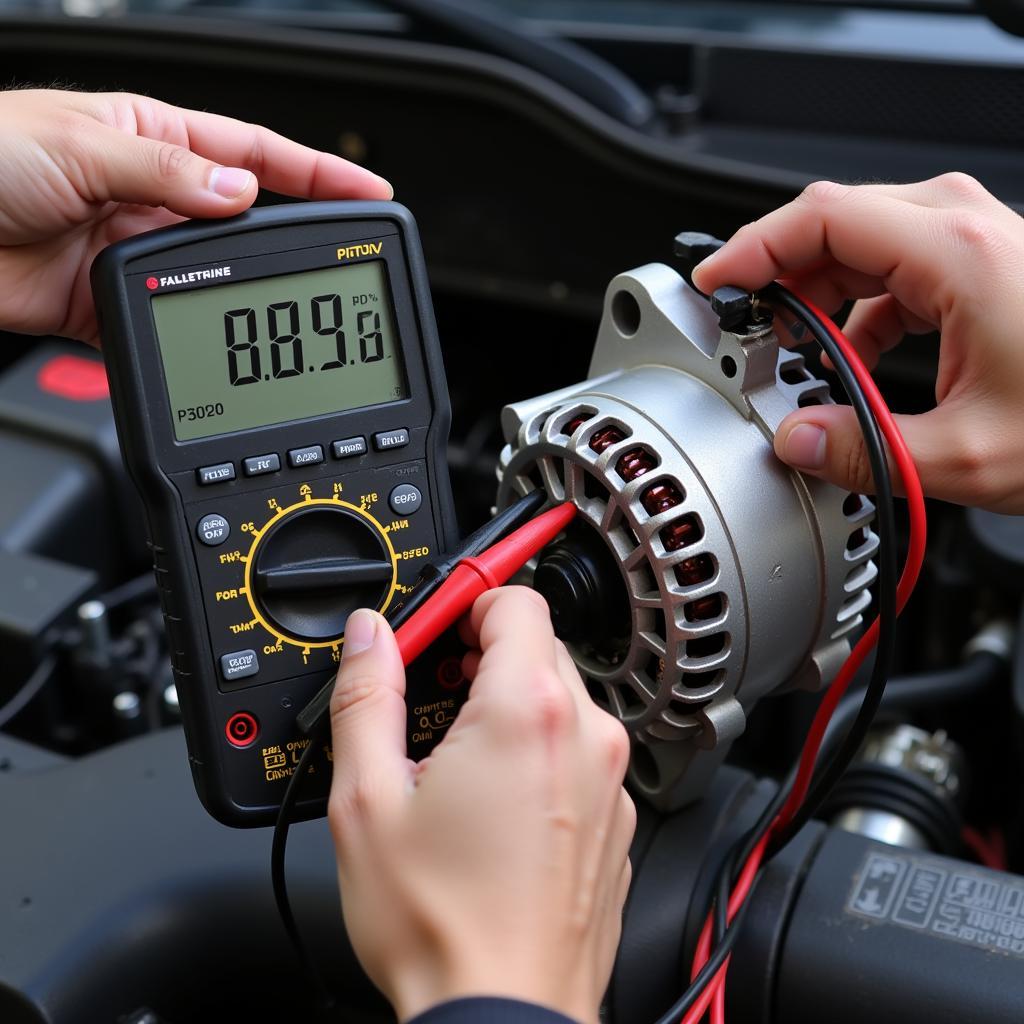Is your car refusing to start? Are your headlights dimming? Determining whether it’s a bad battery or a faulty alternator can be tricky. This guide will equip you with the knowledge and steps to diagnose the problem accurately and get your car back on the road.
Understanding the Roles of Your Battery and Alternator
Your car’s battery and alternator work together like a well-oiled machine. The battery provides the initial jolt of electricity to start the engine. Once the engine is running, the alternator takes over, supplying power to the electrical systems and recharging the battery. A problem with either component can lead to starting issues, dimming lights, and other electrical malfunctions. Knowing how to differentiate between the two is essential for effective troubleshooting. Check out our article on reasons a car battery keeps dying for more insights.
How Does a Bad Battery Manifest?
A failing battery can exhibit various symptoms. Slow engine cranking is a classic sign, indicating the battery struggles to provide enough power to start the engine. Dimming headlights, especially when idling, are another common symptom. You might also notice clicking sounds when you turn the key or interior lights that are noticeably weaker than usual.
What are the Signs of a Faulty Alternator?
A faulty alternator often presents itself through dimming or flickering headlights that worsen as you accelerate. You might also experience electrical issues, such as malfunctioning power windows or a failing radio. A dead battery, especially after a recent jump-start, can also point towards a bad alternator, as it’s not being recharged properly. Learn more about why your car battery new but keeps dying.
 Testing a Car Alternator Using a Multimeter
Testing a Car Alternator Using a Multimeter
Diagnosing the Problem: Is the Battery or Alternator Bad?
Performing a few simple tests can help you pinpoint the culprit.
The Jump-Start Test
If your car starts with a jump-start but dies soon after, it’s a strong indicator of a faulty alternator. The jump-start provides the initial power, but the alternator fails to keep the battery charged.
The Battery Voltage Test
Using a multimeter, measure the battery voltage with the engine off. A healthy battery should read around 12.6 volts. A lower reading suggests a discharged or failing battery. If the voltage drops significantly when the engine is running, the alternator is likely not charging properly.
The Alternator Output Test
With the engine running, use a multimeter to measure the voltage at the battery terminals. A healthy alternator should output between 13.5 and 14.5 volts. A lower or fluctuating reading indicates a problem with the alternator.
Preventive Maintenance and Care
Regular battery and alternator checks are essential for avoiding unexpected breakdowns. Have your battery tested annually and consider replacing it every 3-5 years, depending on usage and climate. Inspect your alternator belt for wear and tear and replace it if necessary. Addressing potential problems early can save you time, money, and frustration down the road. If your battery keeps dying while parked, you might want to learn about the common battery drain causes.
Conclusion: Getting Back on the Road
Determining whether it’s the battery or alternator bad requires careful observation and a few simple tests. By understanding the symptoms of a failing battery and a faulty alternator, and following the diagnostic steps outlined in this guide, you can accurately identify the source of your car’s electrical troubles. Addressing the problem promptly ensures a smooth and reliable driving experience. Don’t let a bad battery or alternator leave you stranded; take control and get back on the road with confidence! Check out more resources on why my car battery keeps dying while parked or if my car battery keeps dying in the cold.
FAQ
- How long does a car battery typically last? Most car batteries have a lifespan of 3-5 years, but various factors can influence this.
- Can a bad alternator damage the battery? Yes, a faulty alternator can overcharge or undercharge the battery, leading to premature failure.
- What causes an alternator to fail? Common causes of alternator failure include worn-out brushes, damaged diodes, and a faulty voltage regulator.
- Can I drive with a bad alternator? You can drive a short distance with a bad alternator, but the battery will eventually drain, leaving you stranded.
- How much does it cost to replace a car battery? The cost of a new car battery typically ranges from $50 to $200, depending on the type and brand.
- How much does it cost to replace an alternator? Alternator replacement costs vary, typically ranging from $300 to $700, including parts and labor.
- How can I prevent battery and alternator problems? Regular maintenance, including battery testing and alternator belt inspections, can help prevent issues.



